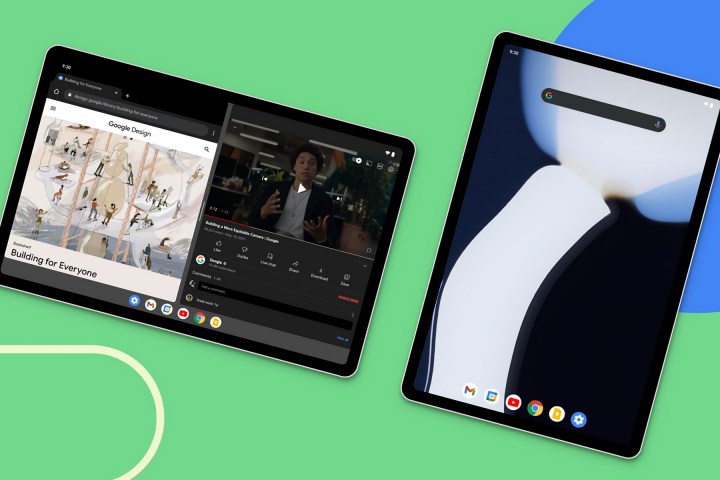Google today rolled out the March Feature Drop and Android 12L to the Pixel 6 and Pixel 6 Pro after a release came to older Pixels in the first week of March. The delayed release comes after a second such delay for Google’s newest phones, raising concerns of teething issues with the company’s Tensor processor.
With the March Feature Drop and Android 12L, Google is bringing a few quality of life improvements to the Pixels. It’s adding Night Sight support to the Snapchat app, allowing for better nighttime photography when using the popular social media app. It’s also improving the Pixel’s smart Live Caption feature to allow users to “type” their phone calls out and have an automated voice transcribe incoming audio and read text out to the person on the other end.
Google also highlights app updates (some of which have already rolled out), including a new battery widget coming to the Style and Wallpapers app, new YouTube integration in the Messages app, and YouTube live sharing with the Duo video calling app, much like Apple’s Share Play.

Android 12L for its part is a smaller update as far as Pixels go. There are small interface changes with a smaller clock face for the lock screen, nicer wallpaper and widget pickers, and tweaks to the notification center. The multitasking menu also sees some tweaks for people who want to use split-screen often.
While it’s finally here, Android 12L has been a deeply weird release for Google. It was initially positioned as bringing improvements to large-screened devices like tablets and foldables, but
Editors' Recommendations
- Google Pixel 8a: news, rumored price, release date, and more
- 5 ways the Samsung Galaxy S24 beats the Google Pixel 8
- 5 smartwatches you should buy instead of the Google Pixel Watch 2
- Every Android tablet we’re expecting in 2024
- The first Google Pixel 9 Pro hands-on photos are here

